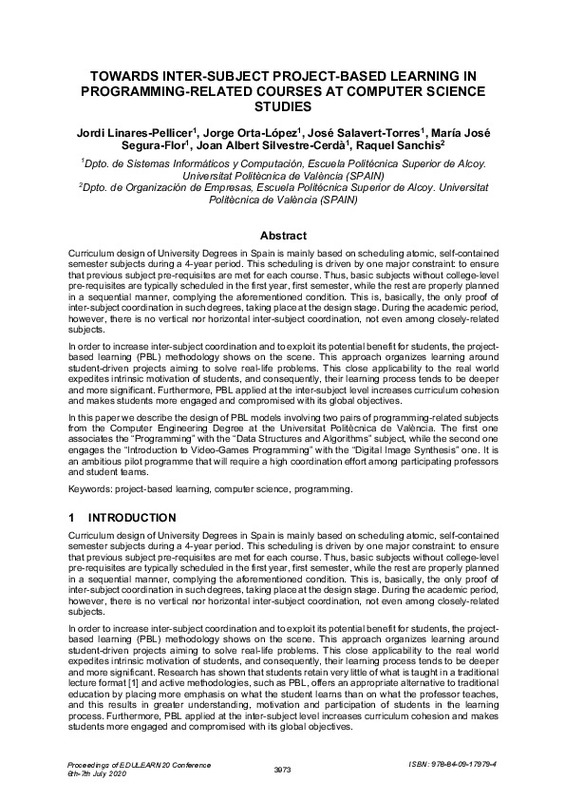JavaScript is disabled for your browser. Some features of this site may not work without it.
Buscar en RiuNet
Listar
Mi cuenta
Estadísticas
Ayuda RiuNet
Admin. UPV
Towards Inter-Subject Project-Based Learning in Programming-Related Courses at Computer Science Studies
Mostrar el registro completo del ítem
Linares-Pellicer, J.; Orta-López, J.; Salavert-Torres, J.; Segura Flor, MJ.; Silvestre Cerdà, JA.; Sanchis, R. (2020). Towards Inter-Subject Project-Based Learning in Programming-Related Courses at Computer Science Studies. EDULEARN Proceedings (Internet). 3973-3978. https://doi.org/10.21125/edulearn.2020.1075
Por favor, use este identificador para citar o enlazar este ítem: http://hdl.handle.net/10251/159339
Ficheros en el ítem
Metadatos del ítem
| Título: | Towards Inter-Subject Project-Based Learning in Programming-Related Courses at Computer Science Studies | |
| Autor: | ||
| Entidad UPV: |
|
|
| Fecha difusión: |
|
|
| Resumen: |
[EN] Curriculum design of University Degrees in Spain is mainly based on scheduling atomic, self-contained semester subjects during a 4-year period. This scheduling is driven by one major constraint: to ensure that previous ...[+]
|
|
| Palabras clave: |
|
|
| Derechos de uso: | Reserva de todos los derechos | |
| Fuente: |
|
|
| DOI: |
|
|
| Editorial: |
|
|
| Versión del editor: | https://doi.org/10.21125/edulearn.2020.1075 | |
| Título del congreso: |
|
|
| Lugar del congreso: |
|
|
| Fecha congreso: |
|
|
| Agradecimientos: |
This article has been supported by the Vice-rectorate for Digital Resources and Documentation
(Vicerrectorado de Recursos Digitales y Documentación) and Vice-Rectorate for Studies, Quality and
Accreditation (Vicerrectorado ...[+]
|
|
| Tipo: |
|









